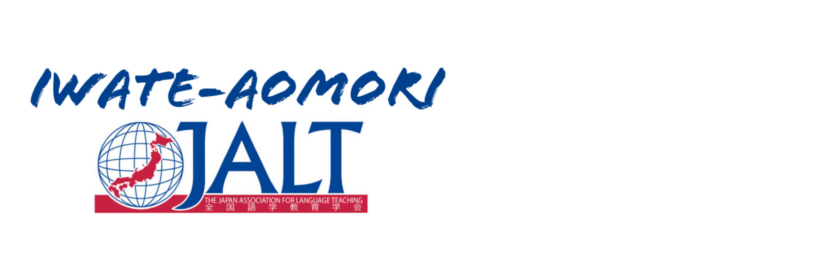Iwate JALT will have a meeting on April 20, 2014 at AIINA in Morioka. We will be hosting a talk by Peter J.Collins from the Foreign Language Center at Tokai University. The title of the talk will be, “Supplementing Reading Materials for Secondary Textbook Lessons.”
Location: AIINA, ROOM 602
Date April 20, 2014
Time: From 1:30pm – 4:30pm(13:30-16:30)
Cost: Free for JALT members. ¥1000 for non-members. ¥500
for full-time students.
Contact: iwatejalt@hotmail.com phone/fax: 019-663-3132
Abstract:
**Scroll down for Japanese abstract
To help senior high students battle textbook passages on global warming, insect
communication, or the importance of cross-cultural understanding, we traditionally
arm them with vocabulary lists, choral readings, and other pre-reading routines. We
then wade into Part 1 of the lesson, counting on the yakudoku approach to “guarantee”
comprehension of the contents and the writer’s message. Later, once we’ve translated the
last line of Part 3, we shift into the post-reading phase, evaluating students’ memory of the
contents and their ability to reproduce the target grammar structures.
This sequence, while time-honored, leaves much to be desired. For one thing, it
overlooks students’ need for more authentic while-reading experiences. For another, it
leaves us entirely dependent on the textbook reading passages for understanding – and
enjoyment – of the historical, scientific, social, and cultural topics introduced. Broader
contexts and key information are often lacking in these passages, however, resulting in
spotty comprehension and low reader interest, for both teachers and students.
In this session, we’ll explore one way to enrich students’ reading experience:
introducing supplementary reading materials. By analyzing a textbook lesson in terms of
its reading purpose, its organization, and its message, we can plan and create readings
which 1) deepen and/or broaden student understanding of the textbook contents and 2)
recycle target language in new contexts in order to help students 3) identify and organize
key information with a communication goal in mind. Sample readings, created by Japanese
secondary teachers and accompanied by self-study worksheets, will be shared. Participants
are encouraged to bring textbooks they are currently using – Junior 1-3, Communication
English 1-2, or Reading – as we will have time to analyze specific lessons and brainstorm
ways to supplement them with extra readings.
Speaker Bio:
After teaching English at secondary schools in Kenya, Taiwan, and Mexico, Peter received his MA in TEFL at the School for International Training in Vermont. He came to Japan in 1995, and in 2004 joined Tokai University’s Higher Research Institute of Educational Development (RIED), which supported and advised JTEs and ALTs at junior and senior high schools around the country. He has contributed to three MEXT-approved textbooks: empathy Oral Communication I and Magic Hat English I and II, and One World English for junior high. This month, Peter started at Tokai University’s Foreign Language Center. His research interests include teacher collegiality, learner autonomy and ways to extend textbook lessons communicatively.
日本における英語教育を振り返ってみると、読みの指導は非常に重視されている (考え方によっては「読み」しかなされていない)ようでありながら、実は、行 われているのは圧倒的に語彙やシンタックスを習得させ、語学力を付ける目的で 行う指導である。これは初級学習者に読解力養成の為の様々なストラテジー(ス キミングやスキャニングの技、スキーマ認識、背景的知識や推理力の認知的な力 の利用等)の難しい点に対応するための方略法であろう。しかし、結局、日本の 高校生は大学入試の前によく勉強するはずだが、残念なことに、単語一つ一つの 逐語訳ができても、文章全体の意味把握ができない学生は少なからずいる。従っ て、書き手の意図やテキスト全体の意味により注意を払いながら読みを進めてい く読み方の指導も求められていると考えている。そこで本発表では、実際に使わ れている教材などを紹介しながら、テキストからその内容を能率的に読み取る能 力を習得させる為の教授法を提案する。

Leave a Reply